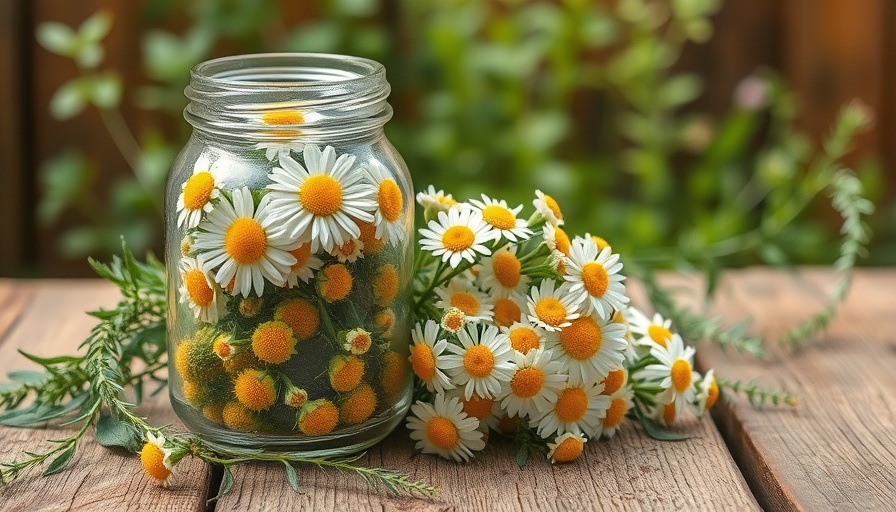
Understanding Damping Off: A Gardener's Nightmare
Damping off can be a gardener’s worst enemy. It’s a fungal disease that primarily affects seedlings, manifesting as a fuzzy mold that stifles growth. Gardeners who have tenderly nurtured their young plants often find the heartbreak of damping off particularly difficult. This disease loves cold, damp conditions, making it especially common in indoor setups and greenhouses.
Why Choose Chamomile? Nature's Versatile Helper
Chamomile is more than just a lovely flower; it's a powerful ally in keeping your garden thriving. Not only is it celebrated for its calming properties in herbal tea, but it also boasts antifungal benefits that can combat damping off effectively. Easily grown in your backyard, chamomile’s cheerful blooms can brighten your garden while protecting your seedlings.
Crafting Your Own Chamomile Fungicide
Making a chamomile fungicide is simple and cost-effective. All you need are chamomile flowers, water, and a spray bottle. This DIY solution harnesses the natural properties of chamomile, turning your garden into a healthy biome. To make your spray, steep either fresh or dried chamomile flowers in hot water, let them cool, and strain the mixture into your spray bottle. Your homemade fungicide is ready for action!
Utilizing Chamomile in Your Outdoor Garden
Once your fungicide is prepared, it's time to start treating your plants. Spray affected seedlings and surrounding soil to ward off future fungal issues. Regular application, especially when you notice high humidity, can help maintain a healthy environment for your plants. Not only will you protect your investment, but you also embrace natural gardening principles.
Additional Benefits of Chamomile
Utilizing chamomile goes beyond just treating damping off. Its flowers can be harvested for medicinal purposes, infused in oils, or even enjoyed in salads and teas. This means cultivating chamomile contributes to both your garden's health and your well-being!
So why wait? Start embracing the power of chamomile today! It’s time to take proactive steps in ensuring the vitality of your outdoor garden.
 Add Row
Add Row  Add
Add 

 Add Row
Add Row  Add Element
Add Element 




Write A Comment